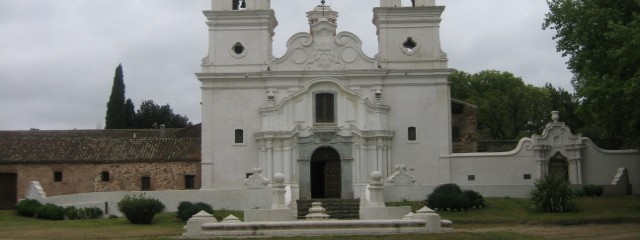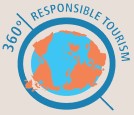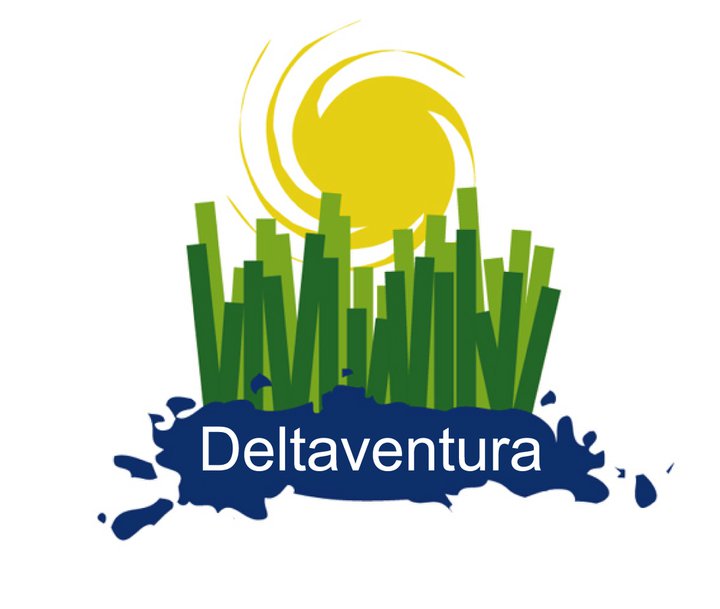Tucuman, Salta and Jujuy

These three provinces are located on the northwestern tip of Argentina. They include high Andean mountains, high desert areas (known as the Puna), and towards the East, tropical rainforests and dense vegetation. Among these areas is the “Quebrada de Humahuaca”, recently listed as a Heritage for Mankind by UNESCO. The distinctive feature of the Provinces of Salta and Jujuy is the presence of many villages possessing strong culture and traditions. The Calchaquí Valleys are inhabited by the descendants of the Diaguitas, who follow their ancestors traditions of breeding animals, growing different crops, and producing handicrafts. The “Calchaquies Valleys” surprise visitors with their magnificent desert spotted with cactus and vineyards producing the best white wine of Argentina. In The Humauaca Ravine the ancient people who lived here were known as the “quechua-aymará”, and their present-day descendants are known as “kollas”. They live in communities, fight for their right to own their historic lands, cultivate and rear animals and are also good craftsmen. There are many popular celebrations to share with the locals, such as the “Pachamama” (Mother Earth) day on the first day of August, and Carnival festivities during the whole month of February.
Peasant Tourism Network, Calchaquies Valley
We dedicate this space to the presentation of the Peasant Tourist Network, one of the pioneers associations in community tourism in Argentina, and invite you to visit them. The Network is a tourism venture created by a group of families in the south part of the Calchaquies Valley in the province of Salta, in the Northeast of Argentina. Specifically in the districts of Angastaco, San Carlos, Animaná y Cafayate.
The families decided to open the doors of their farms and costumes for the tourism. Their main activity is the agricultural production in small crafted scale, preserving their cultural property and traditional biodiversity. Their production is oriented by the micro-climates, to the growing of grapes, peppers, herbs, onions, tomato, wheat, fodder, diverse fruits as peach, walnut, quince, apple, pear and the raising of sheeps, goats and cattle for home consumption. They also produce cheese, jams, preserves, pastries, homemade wine, textiles, rustic embroidery, ceramics, wood items and other native products of the field within the principles of good practice and care for the natural environment. The network is their own tourist project, designed as a tool to generate local employment and genuine and decent incomes, complementary to their traditional productive activities and above all, to decide what and how much tourism we want to get in our communities.
With the Network that contains us we ensure the work, because for them this new activity is supported in the strengthening of communities, valuating the culture, customs and landscapes, as strengthening our friendship values, honesty and respect. The network was built with technical and financial support of the Social Agricultural Program (PSA – PROINDER) in Salta, under the Ministry of Agriculture (SAGPyA) of Argentina.
The Community of San Jose, Iruya
The community of San Jose is located on the side of a mountain where ancestors developed terrace-agricultural techniques to provide the basic necessities to the community. The views are spectacular and the visitor is treated to the sounds of children playing the flute while ensuring that their goats and mules do not fall down the vertical precipices of the mountain. We are very fortunate to be accompanied to this little corner of paradise by Luis Aguilar.
Luis has won the confidence of the people of the area and has succeeded in constructing a modest lodging on one of the terraces. Little by little, he has been able to succeed in making small improvements to the difficult lives of the locals. One of his initiatives has been the construction of an aqueduct in order to extend the irrigation systems of the small farms in the dry season. The project has been supported by the School #11 of Moron, Buenos Aires, where Ricardo Aguilar, the brother of Luis, is a teacher. This connection has supported the creation of a brotherhood between the two communities. Many youth from Buenos Aires have traveled to San Jose in order to work and integrate themselves with the locals. Material has been donated by various businesses from the Buenos Aires area. Luis takes full advantage of each opportunity in order to contribute his experiences and resources to the benefit of the community and because of this, he is deeply respected by the community who have practically adopted him.
The Association of Weavers of Molinos- Molinos, Valleys Calchaquies
On the outskirts of the village of Molinos, the Cooperative of Weavers keeps the old tradition of loom-weaved ponchos alive, using sheep and Vicuna wool. The Vicuna wool is a highly coveted fabric, known for its fineness. The activity of the Cooperative is closely tied to the captive breeding of Vicunas, shy animals, which rarely come into close proximity of humans. In the same building housing the headquarters of the Cooperative, a building with an interior patio reminiscent of convent architecture, lodging is offered to tourists. During the dry months, the lodging is sometimes unavailable due to a lack of water. Visiting the Cooperative is an unforgettable experience as one is treated to stories about the history of the weavers and their rich cultural significance. Here, it is also possible to purchase beautiful weaved items such as ponchos and rugs with the added bonus of knowing that all of the money you spend will go directly to the producers.

The Foundation Amautas de los Zazos, Amaicha del Valle
The community of Amaicha del Valle is found in the northeast part of the Province of Tucuman, between the Quilmes Mountains and the Calchaquies Valleys. Here we find the survivors of one of the most important groups of the Diaguita culture. The uniqueness of this group is found in the history of its relations with the Spanish Crown. In 1716, the group was recognized as an “indigenous community” and given legal title to its lands, a fact reconfirmed in 1753. In 1990, the government of Tucuman officially recognized the rights of this community to occupy their land. In this area, and more precisely in the neighborhood of Los Zazos, located four kilometers from the central plaza of Amaicha, the Foundation Amauta and the Eco-Museum Cultural School were founded with the help of Balbin Aguayso in 1997.
The Amauta Foundation is an independent non-governmental organization, whose objective is to promote the participation of the people of Amaicha del Valle in social and community activities. The content of the courses is based on the recuperation and conservation of cultural patrimony. The programs encompass a wide range of subjects, integrating the official curriculum while also embracing and supporting creative endeavors. They work in a seminar format, encouraging group activities. The participation of the community in these educational activities provides the opportunity to improve understanding of the problems and finding solutions suitable to all. The Foundation promotes various cultural activities of interest to tourists like the “mother earth fiesta”, a community information centre, art expositions, forestry projects, etc.
Province of Catamarca

This is the southwestern most province of the NOA region and also the least visited The Sierras Pampeanas contain ancient crystal blocks and rocks dating back to 500 million years ago and they cut across the Province of Catamarca up to the Andes. The Andean Altiplano contains some of the highest peaks in South America and a large number of volcanoes. The mountain slopes are full of attractive secondary roads, passes, ports or portezuelos typical of Catamarca. Because vehicle traffic does not justify the construction of tunnels, the provincial roads are still narrow, twisty and very scenic as they climb up and down the mountains. These roads link small towns ripe with tradition as well as some interesting archeological sites. The local pottery and metalwork that the craftsmen produce is part of their inherited culture. Some 2000 years ago and up to the Inca invasion, the natives built circular houses with 3 to 6 rooms and produced highly developed pottery and ornaments in gold, silver, copper, and metal alloys.

San Juan and La Rioja

These two provinces cover the Central and Northern Andes in Argentina and share a boarder with Chile to the West. Contained within these two provinces are the Moon Valley and Talampaya, places of unparalleled beauty listed as Natural Heritage Sites by UNESCO. The Moon Valley takes one back to the origins of life on the planet. Here, nature and the passage of time have carved the stone into uncommon shapes. The Talampaya canyon covers tens of kilometers and has an average height of 160 m. In addition to the striking shapes eroded onto the canyon walls, the place is a true deposit of rupestrian art. The national parks and protected areas make these provinces a tourist destination of unequaled variety. The area is an important site for interested persons and experts of geology and paleontology.

Mendoza
Caminos de Altamira

Caminos de Altamira is a community tourism proposal in the Uco Valley, in the western province of Mendoza, 1.000 meters high on the edge of the Cordillera de los Andes.The project began in November of 2001 with Marcelo Reynoso, the coordinator of the Rural Extension of the INTA agency of the town of La Consulta, who led the initiative to the neighbors. The object was to stop the migration of young people to the suburbs of the capital city of Mendoza due to the lack of local economic initiatives. With the help of INTA, the participants created new tourist activities based in the local cultural and in the farmers daily life. Based on the principles of sustainability and participation, they opened the doors of their own farms, warehouses and homes, to offer the tourist a truly experience of local country life. Today, the association Caminos de Altamira has participation by farmers, artisans and tour operators of the area and they offers packages that include the social, cultural and tourism aspects, with various alternatives to suit the different expectations of travelers. In 2007 the project received an international award in the International Tourism Fair of Berlin, for community tourism and social responsibility.

Cordoba

The Province of Cordoba is located in the center of Argentina and is characterized by Precambrian hills, high plains, lakes, reservoirs and green valleys. The mountains of Cordoba are an ideal gateway into the world of mountain sports. The highest peak, the “Champaquí”, is 2780 m high. Our itineraries focus on the exploration of different villages in the mountains and valleys. Cordoba is ideal for horse riding, trekking and visits to mountain country houses or crafts markets.
The Jesuit influence
The campaign of evangelization undertaken by the Jesuits left a legacy in the Cordoba area in the form of Jesuit estancias that have subsequently been declared an interest of humanity by UNESCO. In this journey we invite you to explore these “estancias” scattered throughout the Cordoba area. The Jesuit center of the City of Cordoba acted as the core of Jesuit administration, where they also founded a very famous university.
The estancias provided the economic means necessary to support the Jesuit project of evangelization. There are four main estancias to visit: the “Estancia Santa Catalina”, close to Cerro Colorado, where indigenous drawings have been found on cave walls; the “Estancia de Jesus Maria” dedicated to the production of wine and also containing a Jesuit Museum; the “Estancia de Colonia Caroya”, the first Jesuit estancia acquired by the Jesuits in 1616 and the “Estancia de Alta Gracia” where the chief industry was the fabrication of bells, all contributed to the Jesuit cause.

| Links: |


